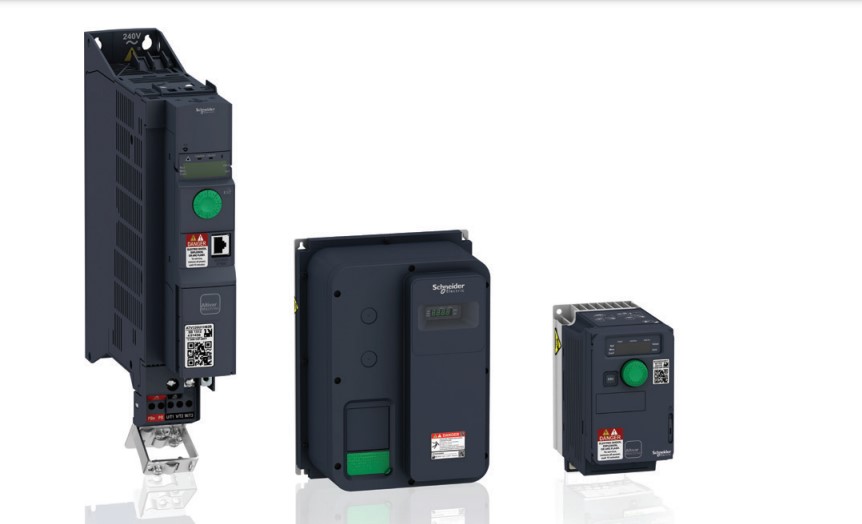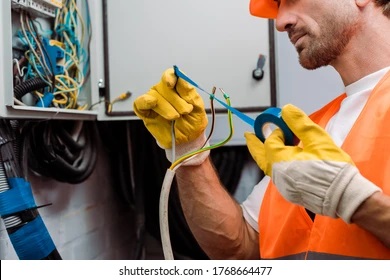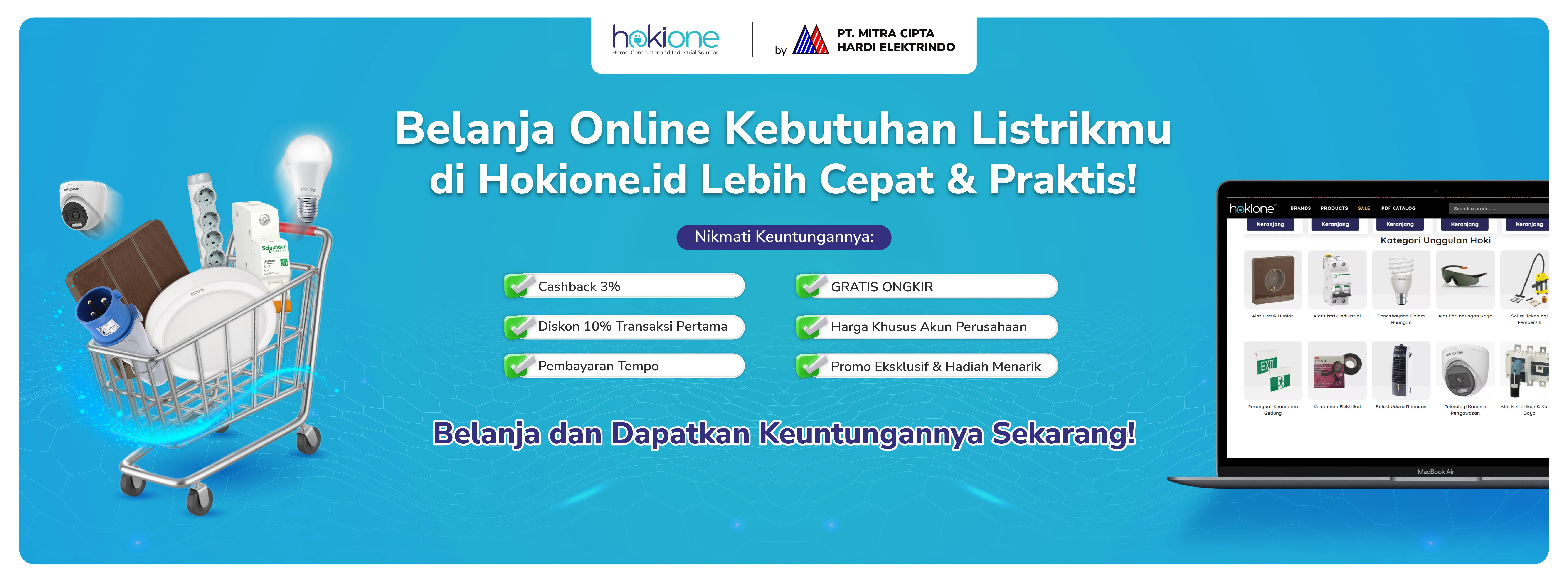Fungsi Inverter Variable Speed Drive (VSD) pada Motor Listrik dan Peralatan Industri

Fungsi inverter atau variable speed drive (VSD) tanpa disadari sangat membantu kita dalam penggunaan perangkat elektronik dengan motor listrik untuk aktivitas sehari-hari.
Mesin dalam perangkat elektronik memang sangat kompleks dan rumit. Ada banyak komponen yang saling mengisi sehingga mesin dapat berfungsi sebagaimana mestinya.
Dalam beberapa perangkat yang menggunakan motor listrik, inverter atau variable speed drive menjadi bagian komponen yang penting dengan fungsinya yang memudahkan pengguna.
Mau tahu apa saja fungsi inverter atau variable speed drive dan penggunaannya dalam kehidupan sehari-hari? Mari simak artikel ini.
Baca Juga: 10 Peralatan K3 untuk Proyek Industri Berat dan Fungsinya
Apa Itu Inverter?
Inverter Variable Speed Drive (VSD) adalah alat untuk mengontrol kecepatan dan torsi motor listrik dengan mengatur frekuensi dan tegangan sehingga kecepatan di mesin bisa diatur sesuai kebutuhan. Sederhananya, inverter VSD digunakan pada perangkat-perangkat yang mengandung motor listrik.
Inverter variable speed drive bisa meningkatkan efisiensi energi sekaligus memperpanjang masa pakai motor listrik serta mengurangi biaya operasional.
Dengan adanya VSD, mesin-mesin seperti pompa, kipas, dan kompresor dapat diatur lebih fleksibel sehingga bisa menyesuaikan dengan kebutuhan beban, menghasilkan kinerja yang lebih efisien dan hemat energi dalam berbagai industri.
Untuk membahas lebih mendalam tentang fungsi inverter variable speed drive, simak penjelasan di bawah.
Fungsi Inverter pada Motor Listrik
Fungsi inverter pada motor listrik adalah untuk mengubah arus searah (DC) menjadi arus bolak-balik (AC) dengan frekuensi dan tegangan yang dapat diatur.
Fungsi utama inverter adalah mengontrol kecepatan dan torsi motor listrik dengan efisiensi yang tinggi. Hal ini sangat berguna dalam aplikasi industri di mana kebutuhan akan kecepatan motor yang variabel sangat penting, seperti pada conveyor belt, pompa, dan kompresor.
Dengan menggunakan inverter, motor listrik dapat beroperasi dengan lebih fleksibel dan hemat energi, serta mengurangi keausan mekanis dan kebutuhan perawatan.
Fungsi Inverter pada Mesin Produksi dan Peralatan Industri
Fungsi inverter pada mesin produksi dan peralatan industri adalah untuk mengatur kecepatan dan torsi motor listrik secara presisi sehingga meningkatkan efisiensi operasional dan fleksibilitas proses produksi.
Dengan adanya inverter, mesin dapat bekerja pada kecepatan optimal sesuai kebutuhan spesifik tiap proses produksi.
Mesin produksi dan peralatan industri yang menggunakan inverter akan lebih sedikit mengonsumsi energi, keausan mekanis jauh lebih berkurang, masa pakainya tahan lama, dan kontrol kualitas produk jadi lebih tepat.
Powered by Froala Editor

Contoh Kegunaan Inverter
1. AC
Inverter pada AC berfungsi untuk mengatur kecepatan kompresor sesuai dengan kebutuhan pendinginan ruangan. Dengan menggunakan inverter, AC dapat beroperasi lebih efisien karena tidak perlu sering mati-nyala untuk menjaga suhu yang diinginkan.
Inverter menyesuaikan kecepatan kompresor secara kontinu, yang mengurangi konsumsi energi dan memberikan pendinginan lebih stabil dan cepat. Selain itu, AC inverter lebih hening dan tahan lama karena kompresornya bekerja lebih halus dan konsisten.
2. Lift/Elevator
Inverter pada lift atau elevator berfungsi untuk mengatur kecepatan motor penggerak lift, memastikan operasi yang halus dan aman. Dengan inverter, lift dapat maju dan berhenti perlahan tanpa hentakan, yang meningkatkan kenyamanan pengguna.
Selain itu, penggunaan inverter membuat energi pada elevator lebih hemat karena motor dapat bekerja pada kecepatan optimal yang diperlukan, bukan kecepatan penuh setiap saat, sehingga mengurangi konsumsi listrik.
3. Kulkas
Inverter pada kulkas berfungsi untuk mengatur kecepatan kompresor sesuai dengan kebutuhan pendinginan. Kulkas inverter dapat mengoperasikan kompresornya pada kecepatan yang lebih rendah ketika suhu stabil, dan meningkatkan kecepatan saat diperlukan pendinginan lebih cepat, seperti saat pintu sering dibuka-tutup.
Inverter pada kulkas dapat menghemat energi dan mengurangi tagihan listrik, sekaligus menjaga suhu lebih konsisten, mempertahankan kondisi makanan tetap bagus, dan mengurangi keausan pada kompresor.
4. Mesin Cuci
Inverter pada mesin cuci berfungsi untuk mengatur kecepatan motor sesuai dengan jenis dan berat cucian. Dengan inverter, mesin cuci dapat menyesuaikan kecepatan putaran secara presisi untuk mencuci, membilas, dan memeras dengan efisiensi tinggi.
Inverter membuat mesin cuci hemat energi dan air, serta mengurangi kebisingan dan getaran sekaligus meningkatkan kinerja pencucian. Mesin cuci inverter juga cenderung lebih tahan lama karena motor bekerja dengan lebih halus dan tidak terbebani secara berlebihan.
Baca Juga: 6 Perbedaan Wet Vacuum Cleaner dan Dry Vacuum Cleaner, Ini Kelebihan dan Kekurangannya!
Fungsi inverter atau variable speed drive ternyata dapat kita rasakan dalam beberapa perangkat elektronik yang membantu meringankan pekerjaan sehari-hari di dalam rumah. Tanpa disadari, inverter pada motor listrik menjadi komponen yang penting.
Tidak hanya di mesin yang berskala kecil saja, inverter pun bisa ditemukan di aplikasi yang lebih besar dan berat, seperti mesin industri dan peralatan pada gedung komersial. Oleh karena itu, keandalan inverter tak boleh diremehkan.
Fungsi inverter variable speed drive pada motor listrik dan peralatan industri dapat dirasakan dari produk elektrikal Schneider Electric yang berkualitas, khususnya pada seri Altivar yang bisa Anda dapatkan di Mitra Cipta Hardi Elektrindo.
Powered by Froala Editor
Related News



